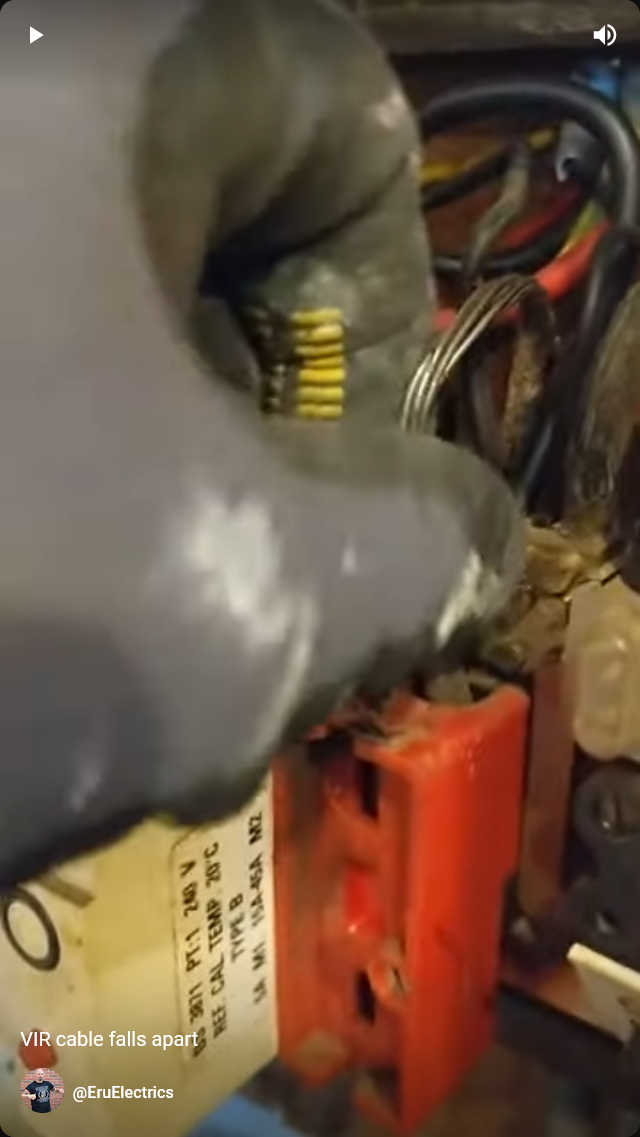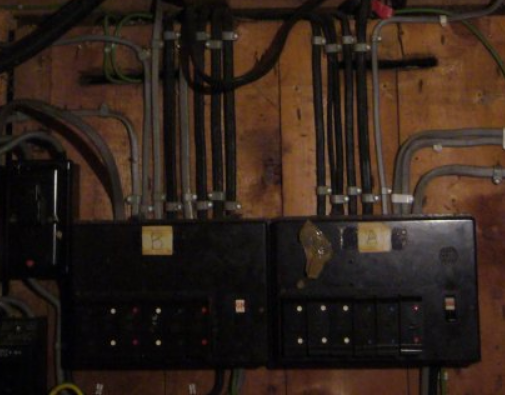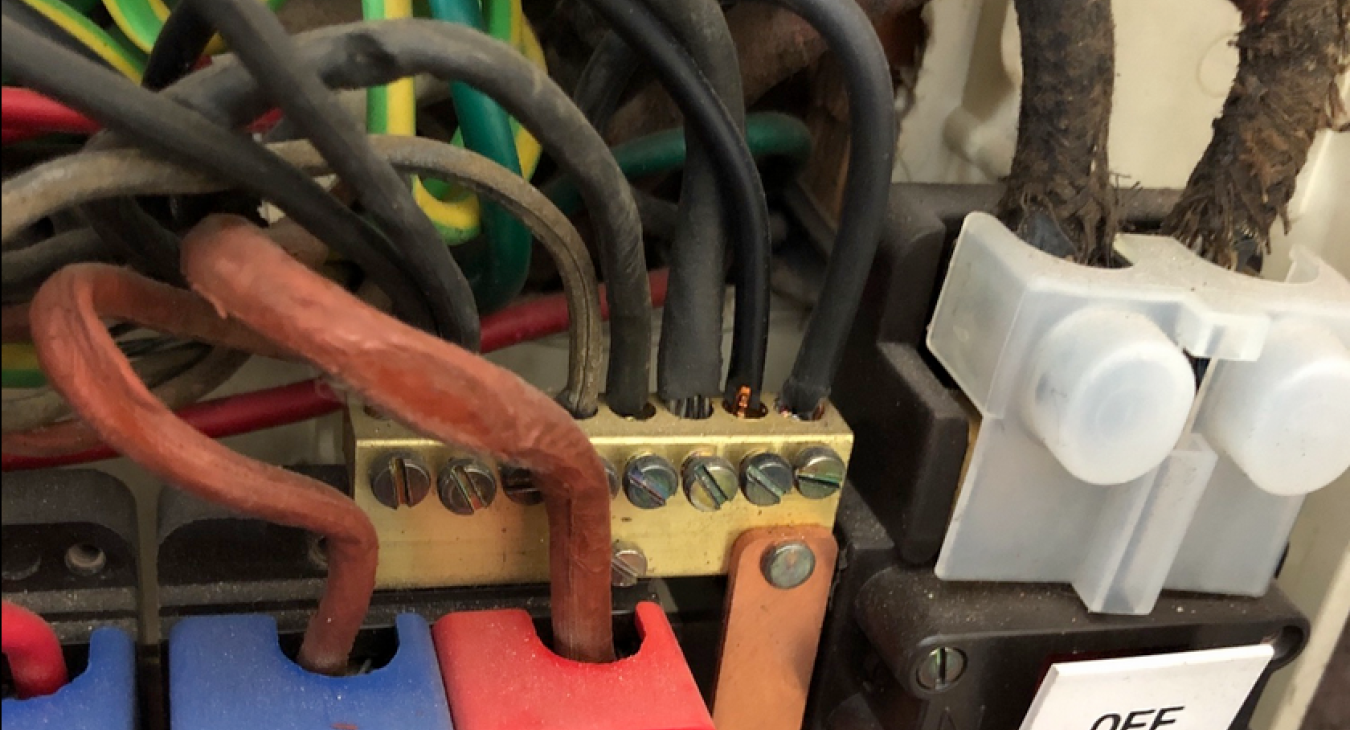Vulcanized Indian Rudder cable or as it’s more widely known, VIR cable, is the type of cable that was widely used in electrical installation in the UK from somewhere around the 1930s up to the 1960s when eventually got replaced with the first form of the twin and earth cable we use today.
Even to this day there are quite a few houses around Kent who are still wired in VIR cables and in my job as an electrician I come across them very often.
As copper was quite scarce back then, VIR cables had tin contactors which is of lower quality material when is comes to electrical installations. The rubber they used to insulate those contactors was also of a very bad quality and after a few years of use it becomes brittle and cracks sometimes even without touching it.
It’s not uncommon to be called for an electrical fault and as I was pulling the socket out to discover VIR cables at the back. As those cables were severely deteriorated, even attempting to fault find it would have made things worst with every movement. In another occasion, a customer was left without lights on their top floor because the cables started causing shorts and only by rewiring the whole house they would be able to have a functional electrical installation.
As is not possible to know the extent of the deterioration we can’t guarantee the safety of the installation to the homeowners and their families who can be left with an accident waiting to happen if the installation doesn't get rewired the soonest possible. VIR cables are also an electrical fire hazard.
VIR cables make it impossible to do even the slightest improvements to any electrical installation in Kent, such as replacing older sockets and switches with more modern ones because by removing the old ones the insulation of the cables very likely will get damaged exposing live wires.
Similar, when we do electrical safety reports (EICRs), for the above reason we are unable to perform a full check which will of course lead to an unsatisfactory report and the need of an urgent rewire.
In the case you are selling your house VIR wiring will cause the house to lose value because the new owner will have to rewire the house alongside with all the redecorating works.
I’m not an expert on housing valuations but I believe the value lost from a house sold in need of a rewire it will be higher than the cost of a rewire before the house goes to the market.
In many older electrical installations if they were looked after and didn’t get DIYed you can upgrade the safety to current standards by just replacing the old rewirable fuseboard with a new consumer unit. Where VIR cable is in installed this upgrade won’t be possible as the cables will get damaged during the replacement, like in the photo bellow when I was replacing one for a customer in Grain and also rewire part of their installation.

How can I know if my house needs has VIR cables in place?
Most time this is very easy to check it yourself without having to interfere with any of your electrics. In most cases where your fuseboard is installed the cables entering it from the top or the bottom or both. Just have a look it and see if anything looks like the with photos bellow (notice the black cables).
If for any reason you are not able to do this, you can always give us a call and book a visual inspection where I will be able to do all the necessary checks and advise you for the way forwards.






